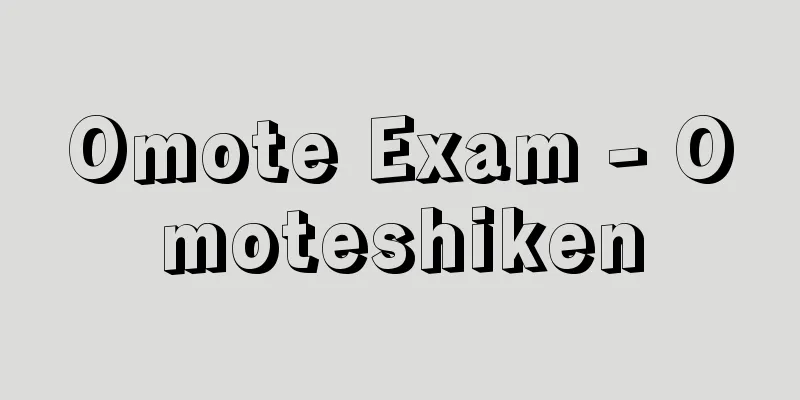Nanjing Massacre

|
Three incidents in China-Japan relations occurred in Nanjing, China, in 1913, 1927, and 1937. (1) In July 1913 (Taisho 2), the Second Revolution to overthrow the Yuan Shikai regime broke out in China, but failed, and on September 1, the Northern Army (Yuan Army) seized Nanjing. At that time, Zhang Xun's troops killed three Japanese residents and looted the homes of residents. The sudden outbreak of the Nanjing massacre, following the imprisonment of Japanese officers in Yanzhou on August 5 and Hankou on the 11th, sparked a strong anti-China sentiment in Japan. The first Yamamoto Gonbei cabinet was criticized for its weak China policy, and on September 5, Abe Moritaro, the Director-General of the Political Affairs Bureau of the Ministry of Foreign Affairs, was stabbed to death. The Japanese government sent its naval forces to demonstrate and formally protested the three incidents on the 10th, and the next day demanded punishment for the soldiers involved, dismissal of Zhang Xun as commander-in-chief of Jiangsu, and compensation. On the 13th, the Chinese government responded by accepting all of Japan's demands regarding the three incidents, and confirmed this in writing on the same day, and the incidents were resolved. (2) On March 24, 1927 (Showa 2), when the Chinese National Revolutionary Army (Second Army and Sixth Army) on the Northern Expedition entered Nanjing, some military and civilian soldiers attacked Japanese and foreign consulates, homes, and American universities, committing robbery and violence against foreigners. In this incident, six foreigners, including the American vice president of Jinling University and one Japanese soldier, were killed, and one Japanese naval captain committed suicide in retaliation. In retaliation, British and American warships on the Yangtze River bombarded the city, killing and wounding many Chinese military and civilians. The foreign sides issued a joint statement demanding an apology and compensation from the Nationalist government, but negotiations were conducted with each country separately. The Wakatsuki Reijiro cabinet supported Chiang Kai-shek's claim that the Communist Party was responsible for the incident and defended him, which led to criticism that its approach to China was weak compared to other countries. This, combined with the sudden financial panic, led to its en masse resignation on April 17th. The Tanaka Giichi cabinet was formed in its place, but relations with the Nationalist government deteriorated, and it was not until May 1929 that the issue was resolved, later than other countries. (3) See separate entry, "The Nanjing Massacre." [Tomio Hora] "Kurihara Ken (ed.), One Aspect of the History of the Manchuria-Mongolian Policy (1966, Hara Shobo)" ▽ "The China-China Victims Association (ed.), The Truth about the Nanjing-Hankou Incident (1927, Okada Niyeido)" [Reference item] |Source: Shogakukan Encyclopedia Nipponica About Encyclopedia Nipponica Information | Legend |
|
1913年、27年、37年の3回、中国の南京で起こった日中関係事件。(1)1913年(大正2)7月、中国で袁世凱(えんせいがい)政権打倒の第二革命が起きたが失敗、9月1日、北軍(袁軍)は南京を奪取した。そのとき張勲(ちょうくん)の軍隊が在留日本人3名を殺害し、居留民の家屋を略奪した事件。8月5日の兗州(えんしゅう)および11日の漢口(かんこう)における日本人将校監禁事件に続く南京における虐殺事件の突発で、国内では対中強硬論が沸騰した。第一次山本権兵衛(ごんべえ)内閣は対中政策の軟弱さを非難され、9月5日には、阿部守太郎(あべもりたろう)外務省政務局長刺殺事件まで起こった。日本政府は陸戦隊を上陸させて示威し、10日、三事件について正式に抗議、翌日、事件関係将兵の処罰、張勲の江蘇都督(こうそととく)免職、賠償などを要求した。13日、中国政府は日本側の三事件に関する要求全部の承認を回答、同日書面をもって確認し、事件は解決をみた。(2)1927年(昭和2)3月24日、北伐の中国国民革命軍(第二軍・第六軍)が南京に入城したとき、一部の軍民が日本その他各国領事館、住宅、アメリカ系大学などを襲撃し、外国人に対し略奪・暴行を働いた事件。この事件でアメリカ人の金陵(きんりょう)大学副総長および日本兵1名を含む外国人6名が殺害され、日本海軍大尉1名が責任をとって自殺した。揚子江(ようすこう)上のイギリスとアメリカの軍艦は報復として城内を砲撃し、多数の中国軍民を殺傷した。外国側は国民政府に謝罪と賠償を要求する共同声明を発したが、交渉は各国別に行われた。若槻礼次郎(わかつきれいじろう)内閣は、事件の責任が共産党側にあるとした蒋介石(しょうかいせき)の主張を支持して、蒋を擁護したため、諸外国に比べてその対中処置が軟弱であると非難され、これに金融恐慌突発事件が重なって、4月17日総辞職した。かわって田中義一(ぎいち)内閣が成立したが、国民党政府との関係が悪化したため、諸外国に遅れてようやく29年5月に至り、問題の解決をみた。(3)別項「南京大虐殺」を参照。 [洞 富雄] 『栗原健編『対満蒙政策史の一面』(1966・原書房)』▽『中支被難者連合会編『南京漢口事件真相』(1927・岡田日栄堂)』 [参照項目] |出典 小学館 日本大百科全書(ニッポニカ)日本大百科全書(ニッポニカ)について 情報 | 凡例 |
>>: Capture of Nanjing - Nanjing Koryaku
Recommend
Everything is accomplished - Issaikaijo
(From the Lotus Sutra - Expedient Means Chapter, &...
Todoroki Shell Mound
Shell mounds are located in Miyanosho (formerly T...
Political science
In Western Europe, political science has been kno...
Chicago School
It is a school of economics. Unlike the Japanese ...
Hamo [town] - Hamo
An old town in Sado County, located in the souther...
Entelehy - Entelehy
…However, there were many vitalists, such as C. B...
Armand Hippolyte Louis Fizeau
French physicist. Born in Paris. His father was a...
Pridi Phanomyong
1900‐83 Thai politician. Royal name Luang Praditma...
Abdera - Abdera (English spelling)
An ancient Greek polis (city-state) located in th...
Fujiwara Toshinori - Fujiwara no Toshinori
Year of death: 10th April 1167 (30th April 1167) Y...
Mikawa [village] - Mikawa
A village in Higashikanbara County, central Niigat...
Otogon Tengri [Mountain] - Otogon Tengri
…700 km long, 2000-3000 m above sea level. The hi...
National Congress of Parents and Teachers
...An abbreviation for "Parents and Teachers...
Whole Earth Catalog
...In addition, with the recent development of el...
Igo
The sound of moaning. The sound of reading. Song D...









